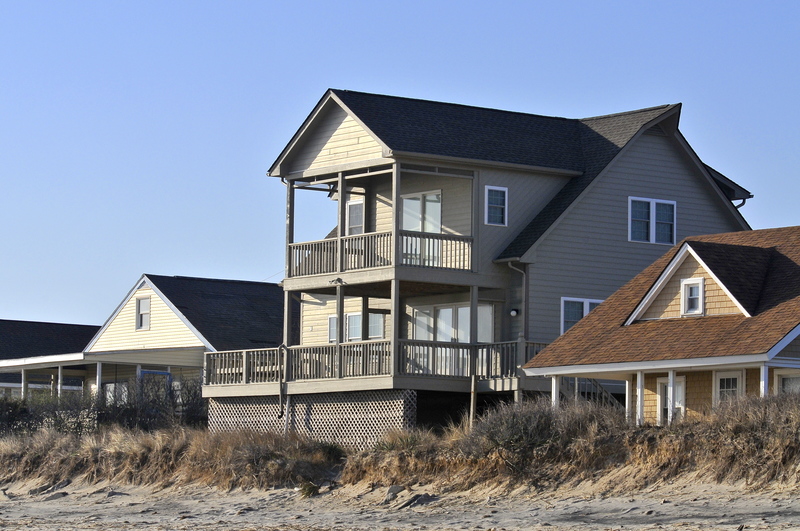Flood insurance rates rising fast
For the majority of people who participate in the National Flood Insurance Program, the first set of federally mandated reforms will have little or no impact. But those who will see a change are in for some major sticker shock.
The Biggert-Waters Reform Act of 2012 seeks to end subsidies. But even as the reforms are implemented, what lies ahead for the act remains to be seen. The U.S. Senate has passed a measure requiring a four-year delay on implementation that would in essence kill the law, which is due to expire in 2017. The U.S. House has yet to take up the Senate's bill, but even one of the law's sponsors, Rep. Maxine Waters, D-Calif., is pushing for a three-year delay.
If the legislation is not changed, over the next few years, most subsidies will be eliminated, said Richard Sabota, Federal Emergency Management Agency Region 3 insurance specialist, during a Feb. 21 workshop at the CHEER Center in Georgetown.
In Sussex County, 12 percent of the county's 20,000 flood insurance policies – about 2,400 – have been receiving subsidies. Most subsidies reduce premiums 50 percent, but some premiums cost only 10 percent of actual costs. In addition, the new measure calls for a 16-percent across-the-board increase in premiums.
Officials say a standard annual rate of about $2,000 would jump up to $10,000 over the next few years before leveling off.
Sabota said many homeowners who receive subsidies live in older homes built before floodplain maps. “They are getting sticker shock on the cost of flood insurance. It has surprised a lot of people,” Sabota said.
Final rates are in flux because new Sussex County floodplain maps have not been finalized. A FEMA coastal study has updated the maps for the first time in 20 years in the Cape Region and for the first time in as much as 50 years in western sections of the county, said Gregory Williams, Department of Natural Resources and Environmental Control scientist. Once the appeal process is complete, the new maps will become effective in March 2015.
Williams said half of the floodplain maps in Sussex County have been revised. “A lot of people are impacted by this,” he said.
Base elevations – how high pilings or foundation must be – in some areas could change by as much as two feet from a minimum of 10 feet increasing to 12 feet for new construction or major renovations.
Reforms hit other groups as well
The reforms will also affect other homeowners. Residents who own second homes that are not their primary residences will see flood insurance premiums increase 25 percent each year starting this year. Once a full-risk rate is established, an actual rate can be set, Sabota said. Homeowners must get an elevation certificate, which requires a surveyor, and submit it to their insurance agent in order to establish risk rates.
Also this year, people who own businesses in floodplains and those who have suffered repeated flood damage will see 25-percent increases per year in their premiums, but Sabota said the actual number of people affected by this increase is miniscule.
New homes, policies that have lapsed and properties sold in flood-risk areas are no longer eligible for subsidies under the reforms.
New maps show accurate risk factors
The updated floodplain maps are more accurate, and they show areas where the risk is greatest. “It will help residents learn more about the risk and how to plan for those risks,” Sabota said.
Sabota said by reducing possible flood damage, homeowners can directly affect how much they pay for flood insurance. Small projects like installing flood vents in foundations and major projects such as raising homes out of harm's way all affect rates. “It then comes down the investment versus the return on the investment,” Sabota said. “The higher you go, the lower the rates are.”
Sabota said the new maps do not consider potential sea-level rise. “Some communities are already reacting and requiring new construction one to three feet above the required base elevation,” he said.
Towns or cities that participate in the coastal rating system program receive discounts ranging from 5 percent to 45 percent. Sabota said communities are rewarded for going above minimum requirements by working to reduce flood risk. “We are getting more and more interest in this. Safer communities is what we are all about,” he said.
Limited grants are also available to property owners for flood-risk prevention projects.
Isabel, Katrina, Sandy overload the program
Prior to 1968, it was impossible to purchase flood insurance; that's when the national program started. Sabota said for the first 35 years the national program was self-sustaining. Sobota said tax dollars were not used to cover losses; all payouts came from what had been paid in premiums.
“But the last 10 years, it has gone off the rails,” he said.
The reason? A series of storms that have bankrupted the program to the tune of about $20 billion.
Hurricane Isabel started the streak in 2003 followed by widespread flooding and four named storms in Florida in 2004.
In 2005, Hurricane Katrina hit the Gulf Coast; it turned out to be the most catastrophic event in the program's history, Sabota said, with $18 billion paid out in losses. “That's more than was paid out in the entire history of the program,” he said.
Sabota said considering the program takes in $3.5 billion in premiums each year, there was no way the losses could be covered without a loan from the U.S. Treasury. In the past such loans have always been paid off quickly, but Congress became concerned that this loan would never be paid off, Sabota said.
Against that backdrop, in 2012, Hurricane Sandy hit the East Coast. It was another multibillion payout, the second most catastrophic event in the program's history.
“The reform act carries a big meaning,” Sabota said.
There was never a provision for a reserve fund in the program; that has been changed under the new law, Sabota said. Five percent of every paid premium is now placed in a reserve fund. The National Flood Insurance Program has 5.6 million policies.
Who needs flood insurance?
Anyone living in a floodplain is advised to purchase flood insurance, but it's not mandatory for all homeowners.
It wasn't until the mid-1990s that mortgage lenders starting requiring flood insurance on mortgaged properties, DNREC's Gregory Williams said. Homeowners' policies do not cover flood damage, and homeowners who pay cash for homes or pay off their mortgages are not required to purchase flood insurance.
Now, anyone who lives in a high-risk area who has a mortgage that is federally regulated or insured is required to purchase flood insurance.
Insurance premiums depend on variables such as amount of deductible, how much the insurance covers and the zone where a house is located. Most premiums cost from $400 to $2,000 per year, but that was before the reforms kick in.
For information on how to file an appeal, look at the proposed floodplain maps or view the recent study, go to: rampp-team.com/de.htm and http://maps.riskmap3.com/DE/Sussex
For more information on the National Flood Insurance Program, go to: floodsmart.gov.






















































